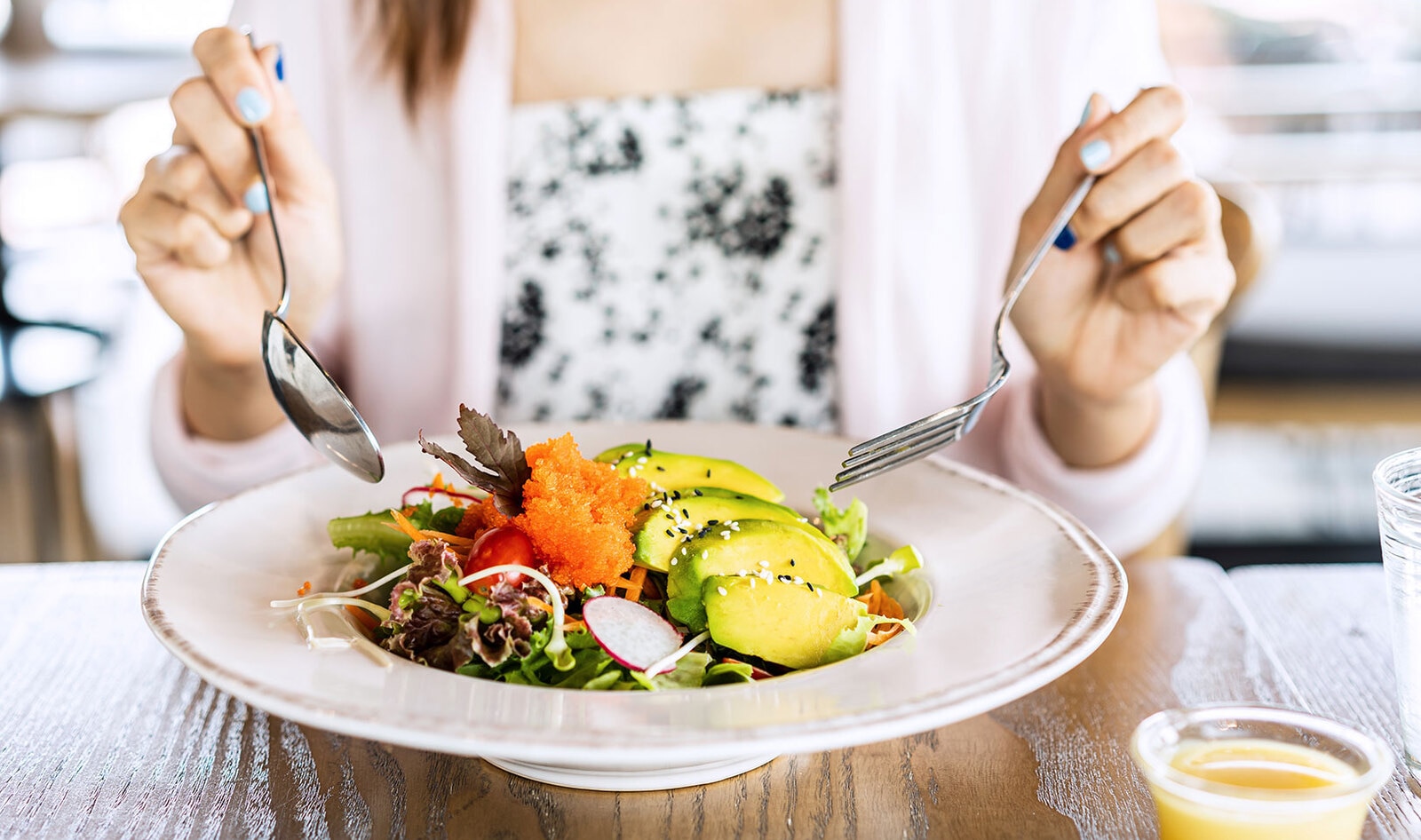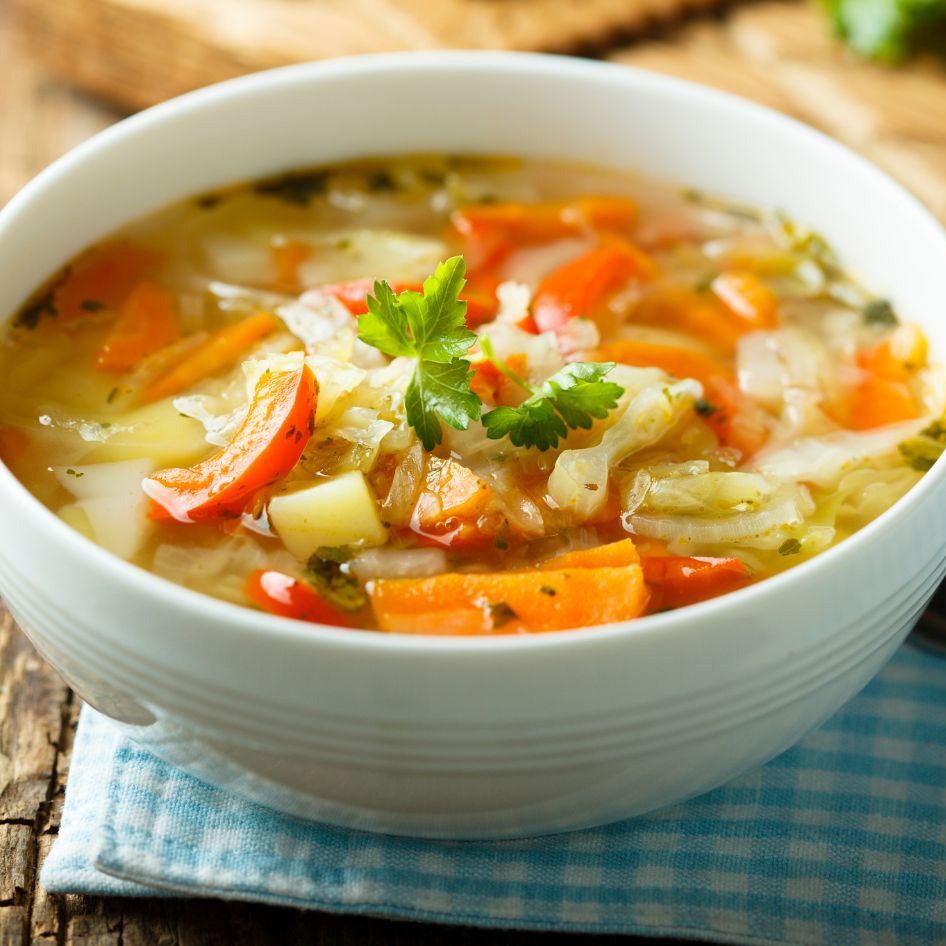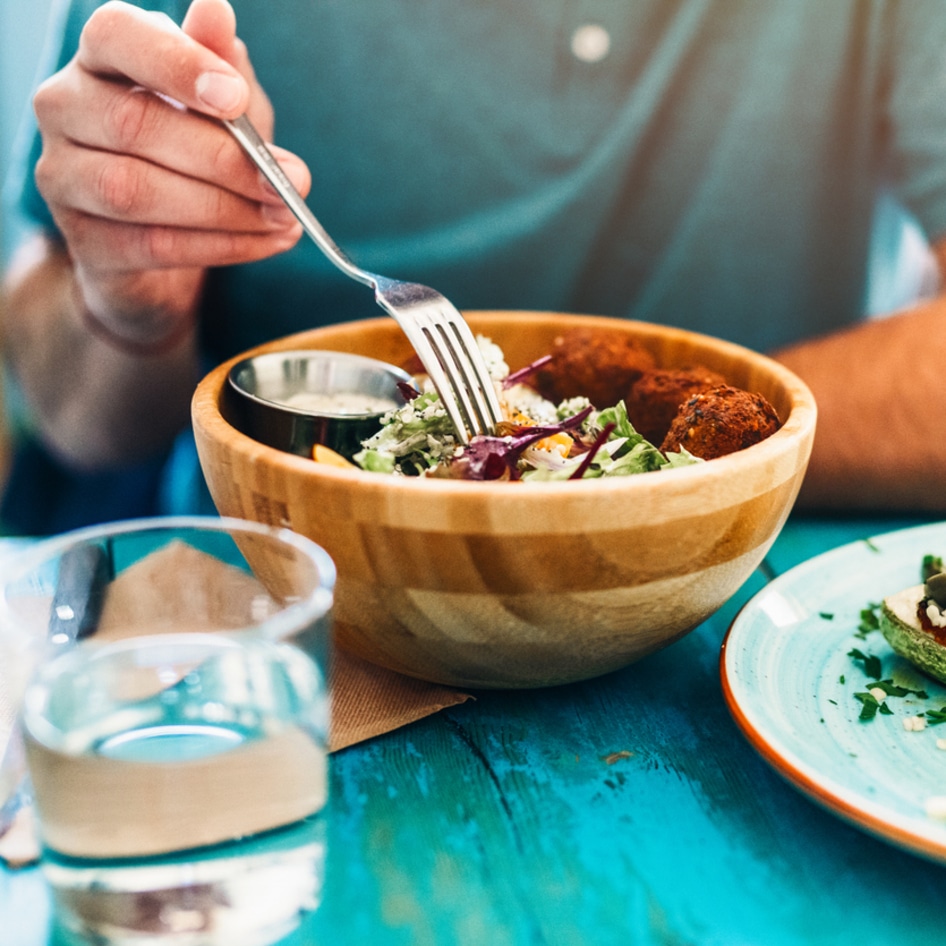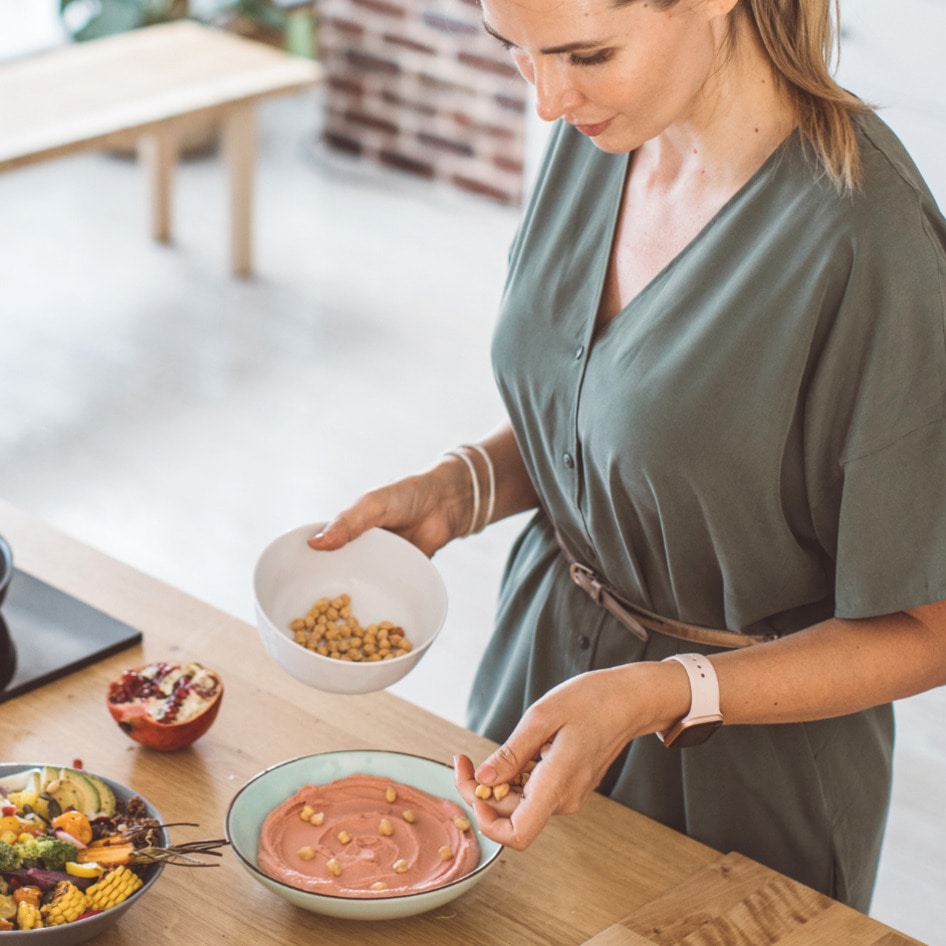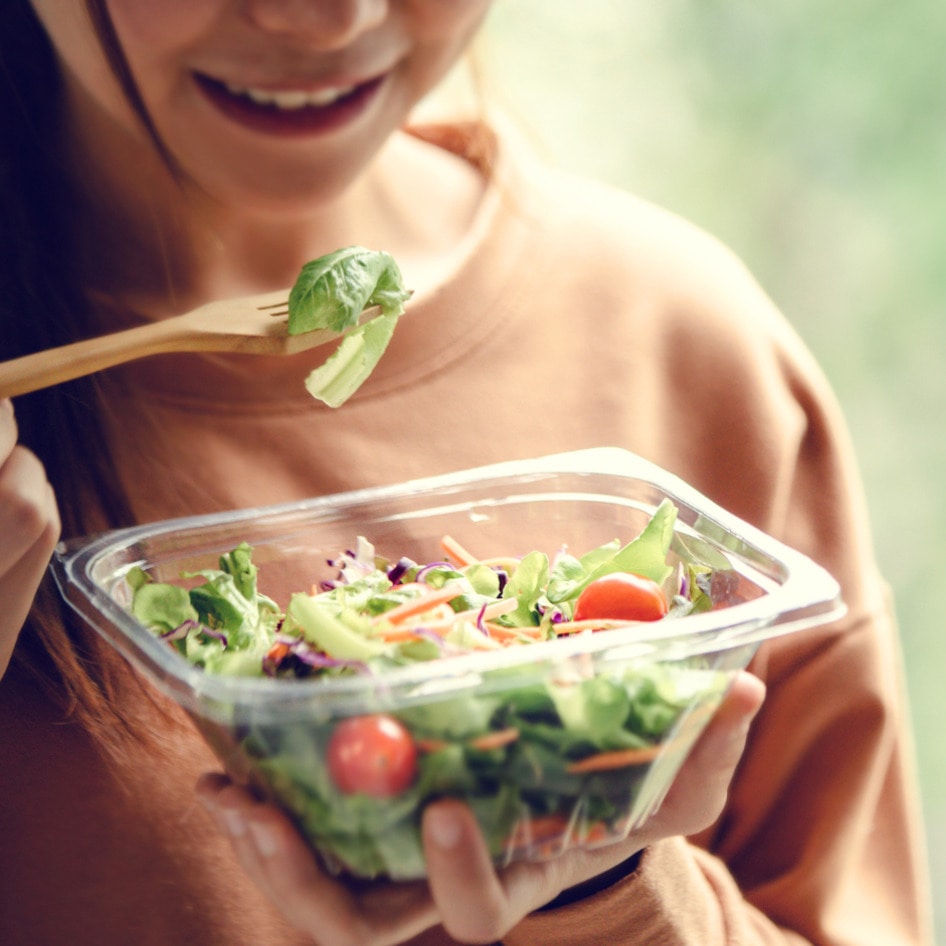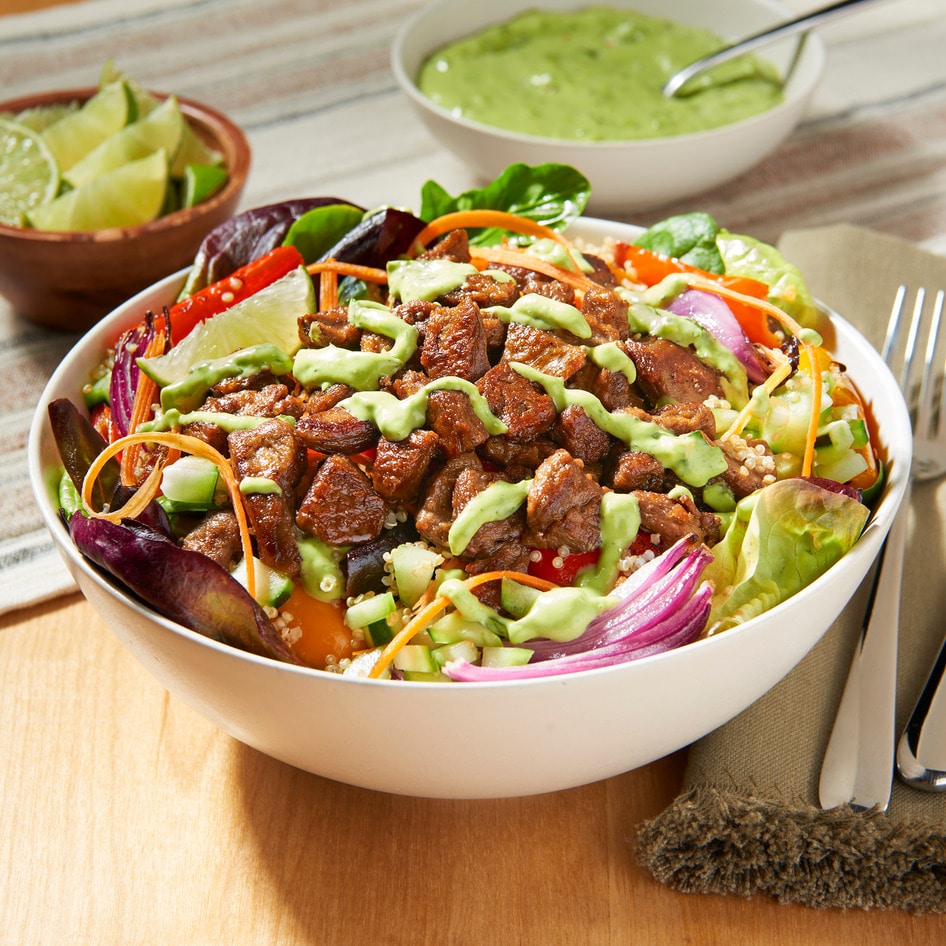According to a study published in the Journal of General Internal Medicine, individuals who follow a vegan diet for approximately 18 weeks shed, on average, four pounds more than those who follow animal-based diets. The beauty of the vegan diet is that there are no gimmicks involved, no hardcore caloric restrictions, and no bonking from malnutrition in the middle of the afternoon. Plus, you can eat carbs (unrefined carbs, that is)! Follow these six tips to lose weight the healthy way, and save the animals and the planet while doing so.
What is a vegan diet?
A vegan diet used to be synonymous with a healthy, relatively whole-food diet. Today, veganism encapsulates a broader definition. Instead of a diet based on plants, it’s perhaps better defined by what it does not include. A vegan diet is free from all animal products including meat, dairy, fish, eggs, honey, gelatin, and any other substances that may come from an animal.
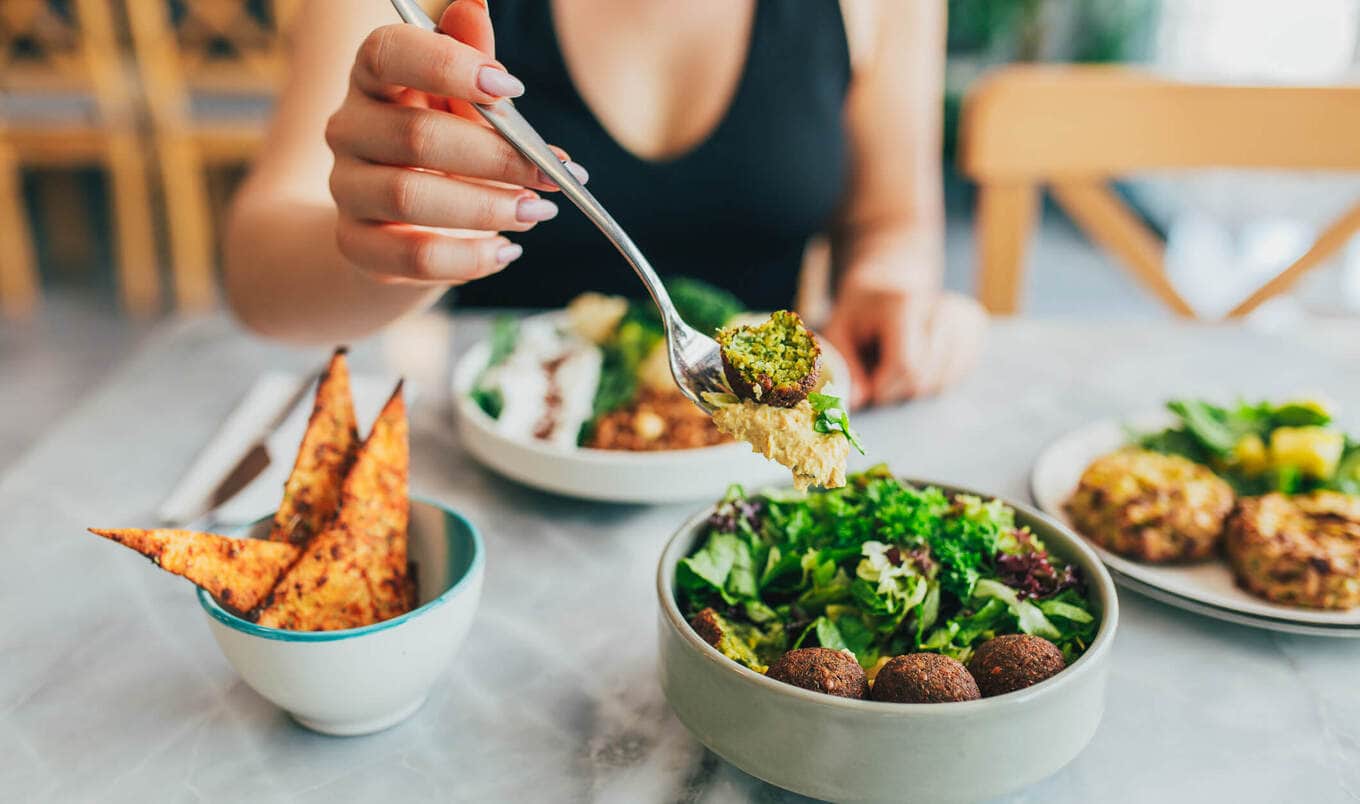 Duygu Coban
Duygu Coban
Despite the elimination of these foods, a vegan diet is extremely abundant, particularly given the innovation of plant-based products within the past decade. There is a vegan version of virtually every animal-based food, and while these items may originate from plants and are still free of animal ingredients, they’re not a whole food by any means. Many vegan products contain ingredients you can’t find at the store such as methylcellulose, natural flavors, and various gums and starches.
So what exactly is a vegan diet? Just like any diet, it can be rich in wholesome foods such as fruits and vegetables, beans and legumes, nuts and seeds, and herbs and spices; it can be full of fats, sugars, and artificial ingredients; and it can be somewhere in between. The uniting factor of all vegan diets is that they are completely devoid of animal-based foods.
What is a healthy weight?
There’s no simple equation here. A healthy weight is based on the individual, and it isn’t necessarily determined by the scale. “There is no universal healthy weight. And usually, scale weight can be dangerous as it varies significantly based on your hydration status, bowel movements, and where you’re at in your menstrual cycle. Bodies are unique and can hold different amounts of weight while still being healthful (free of disease),” explains Whitney Stuart, MCN, RDN, CDCES.
In lieu of facing the scale, Stuart recommends looking at your total body composition. Essentially, how much of your weight is based on bone, muscle, and fat tissue. “A DEXA scan or Bioelectrical Impedance Analysis (BIA) is an easy way to analyze your body’s specific breakdown of muscle, bone, and fat tissue. This can help one determine if they need to lose body fat, gain muscle tissue, or improve bone density,” Stuart elucidates.
 Unsplash
Unsplash
Your mental health can also play a part in determining a healthy weight for you. How you feel in your body matters. Does your current weight allow you to do all the things you want to do, or do you feel hindered by it?
Note: this can go both ways. Those who are underweight may struggle to perform just as those who are overweight may struggle with everyday tasks or hobbies. If you are underweight and don’t have the energy to fully engage in certain activities, or risk bone fracture, that could be a sign you need to gain weight.
Risks of rapid weight loss
Adopting a relatively whole-food, plant-based diet should not result in rapid weight loss as long as you do not significantly reduce your caloric intake at the same time. While dietitians argue that weight loss is not as simple as calories in versus calories out, it is helpful to know that 3,500 calories equate to a pound. So, if you were to reduce your daily calorie intake by 500 calories (3,500 calories over a week), you’d lose about a pound a week. This is within the realm of safe weight loss.
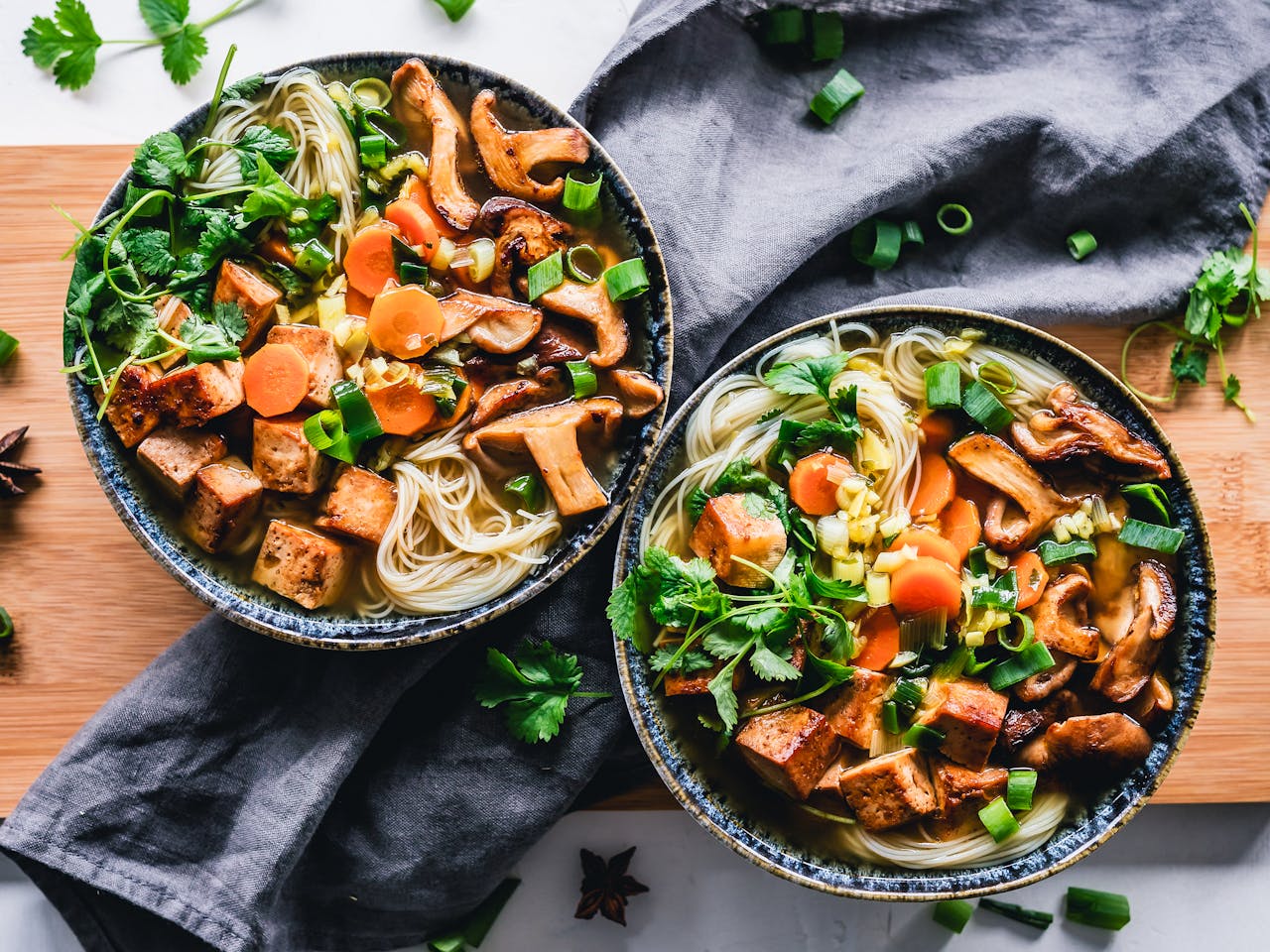 Pexels
Pexels
Losing more than one to two pounds a week is considered “rapid” weight loss and may be a point of concern. One such risk of rapid weight loss is the bounce-back. Severe caloric restriction and/or extreme exercise that results in the loss of more than a few pounds per week is virtually impossible to maintain, and at some point, one will plateau.
While in theory, one could adjust to a new, lower weight, extremities tend to follow one another, and old habits of over-eating and/or lack of exercise may occur. This is called yo-yo dieting—a pattern more than 30 percent of Americans have fallen into. Physical risks of rapid weight loss can include fatigue, headaches, constipation, dizziness, and malnutrition.
6 tips for losing weight on a vegan diet
If you’re looking for ways to lose weight on a vegan diet, read our tips below. However, it’s important to note that you should always talk to your doctor when adopting a new diet or exercise regimen.
BECOME A VEGNEWS VIP: Get exclusive product deals, freebies, and perks galore!
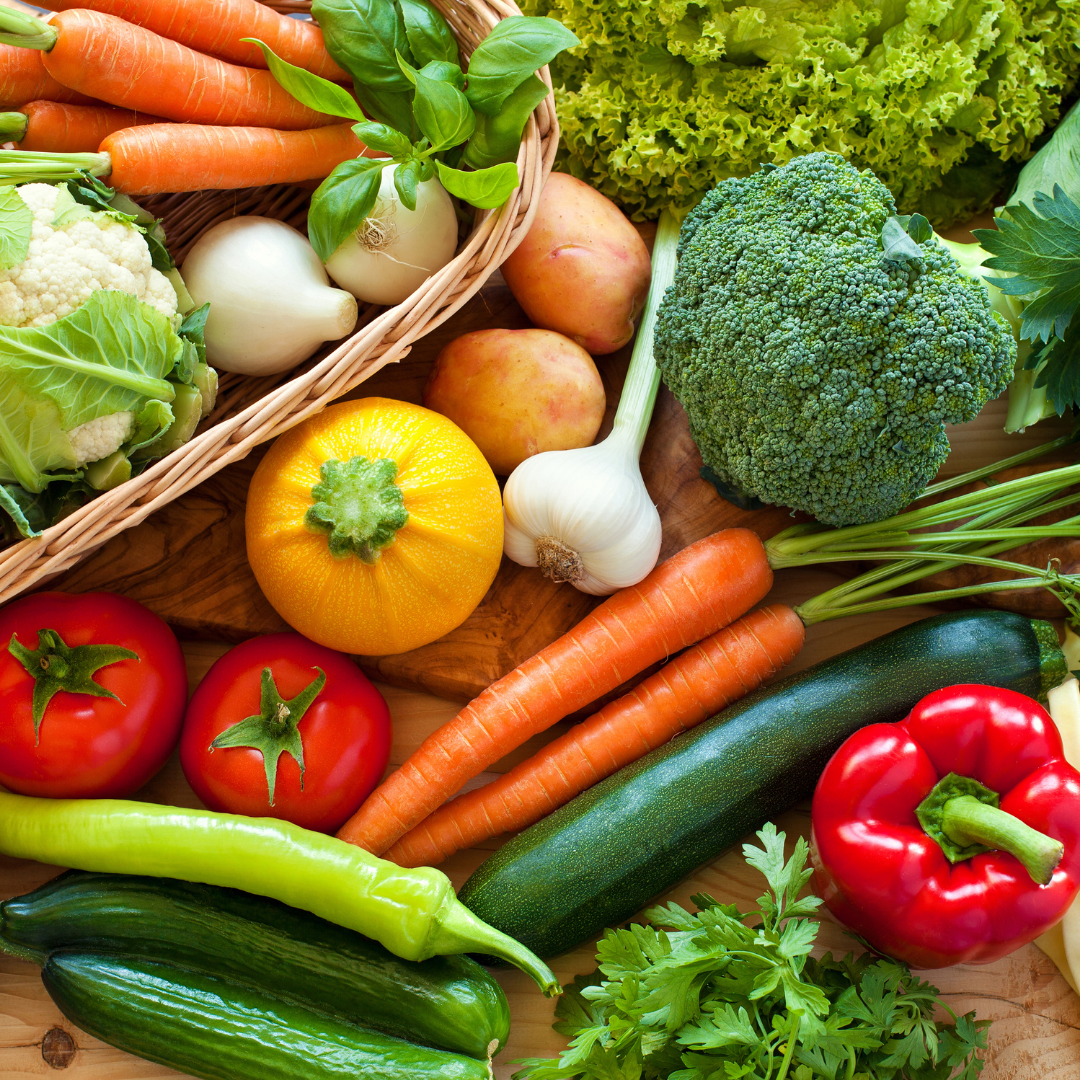
1 Weigh calories versus nutrient density
Weight loss and nutrition are all about return on investment. You want to aim for foods that are low in calories but high in nutrients. Stick with these, and not only will you feel energized and satiated throughout the day, but you also won’t have to bother with calorie counting. Typically, vegetables have the least amount of calories while providing a robust profile of nutrients—followed by fruit, starchy produce (squash, potatoes, corn, and oats), whole grains, and beans and legumes. Focus on these foods to make up the bulk of your meals, and consume higher-calorie plant foods such as nuts, seeds, and avocados sparingly.
“Simple swaps like cereal for oatmeal and soyrizo for tofu improve the nutrient density of the food while eliminating the additional sugar and inflammatory oil prevalence,” Stuart says.
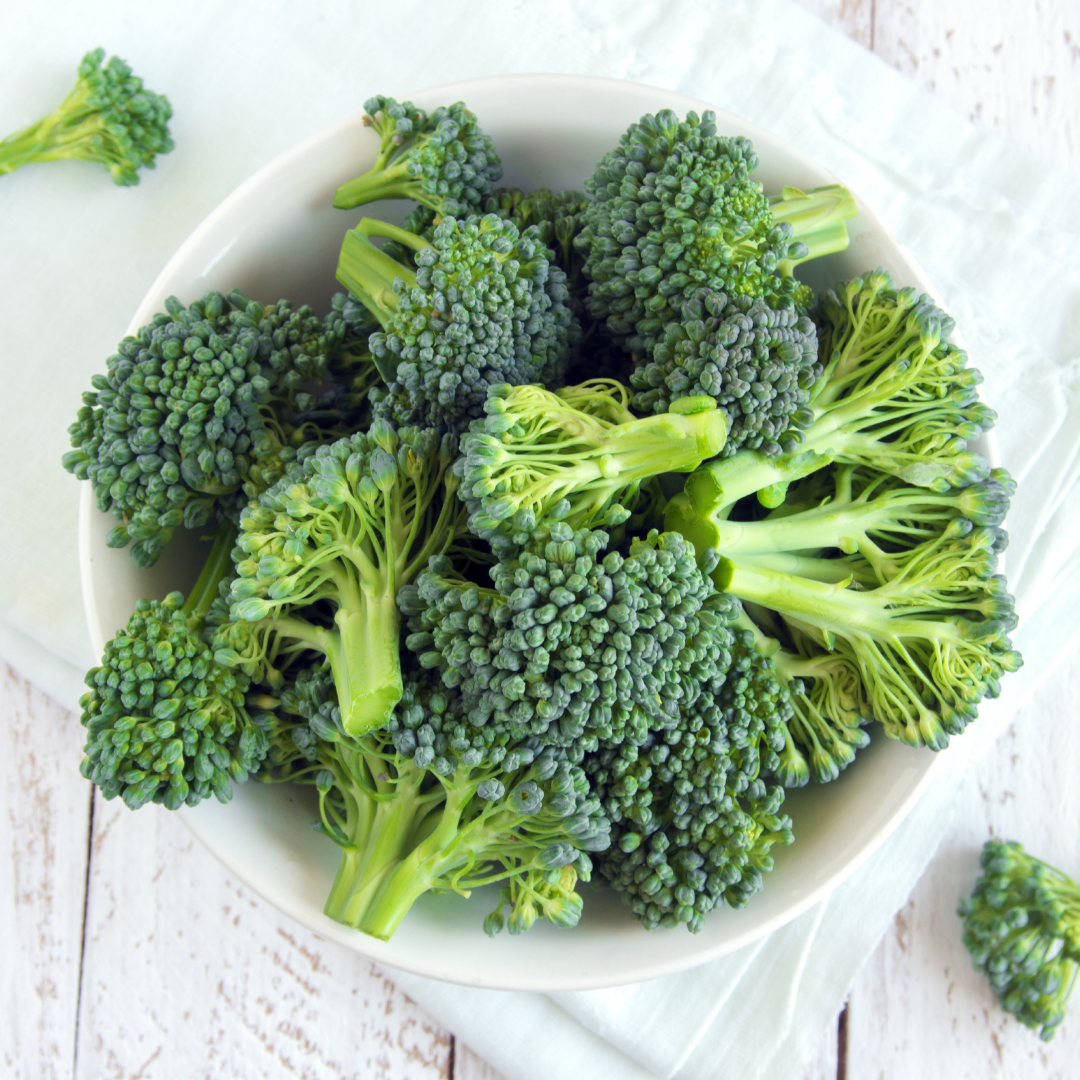
2 Focus on fiber
Constant hunger is one of the main reasons why diets fail. When you focus on high-fiber foods, you’ll feel fuller for longer, as this essential (but highly underrated) nutrient is slow to digest. Most Americans are fiber-deficient and don’t even come close to the American Heart Association’s recommendation of at least 25 grams per day. High-fiber foods include leafy greens, fruit, legumes (including beans, lentils, and peas), and oats.
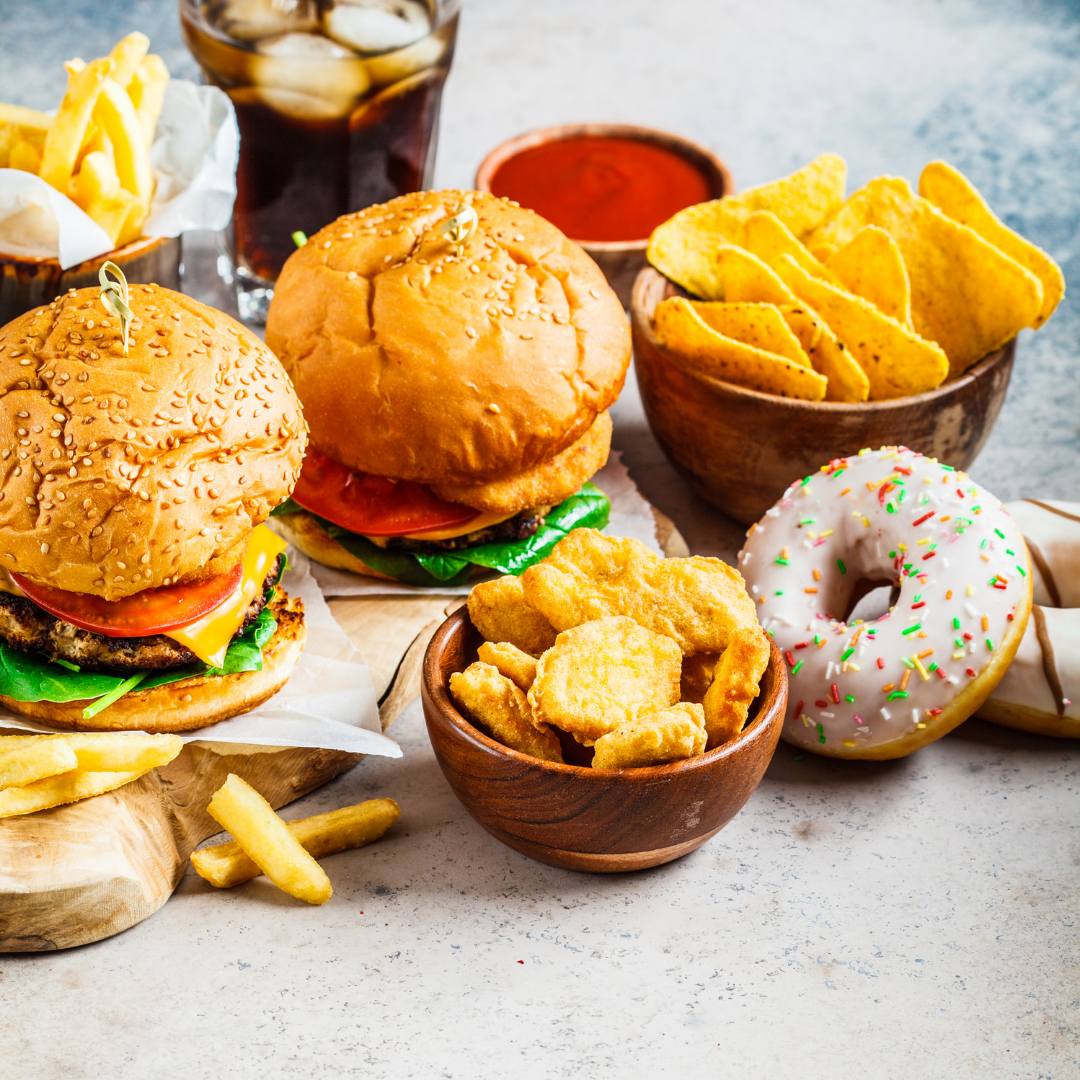
3 Limit processed foods
Sure, those vegan crackers might contain some fiber, but they probably also contain calorically dense oils and other ingredients that could hinder weight loss goals. It’s a wonderful thing to live in a world where vegan options abound, but focus on whole foods, and enjoy vegan treats in moderation. You can still enjoy your favorite crackers, ice cream, and sweets, but these should make up the smallest portion of your diet.
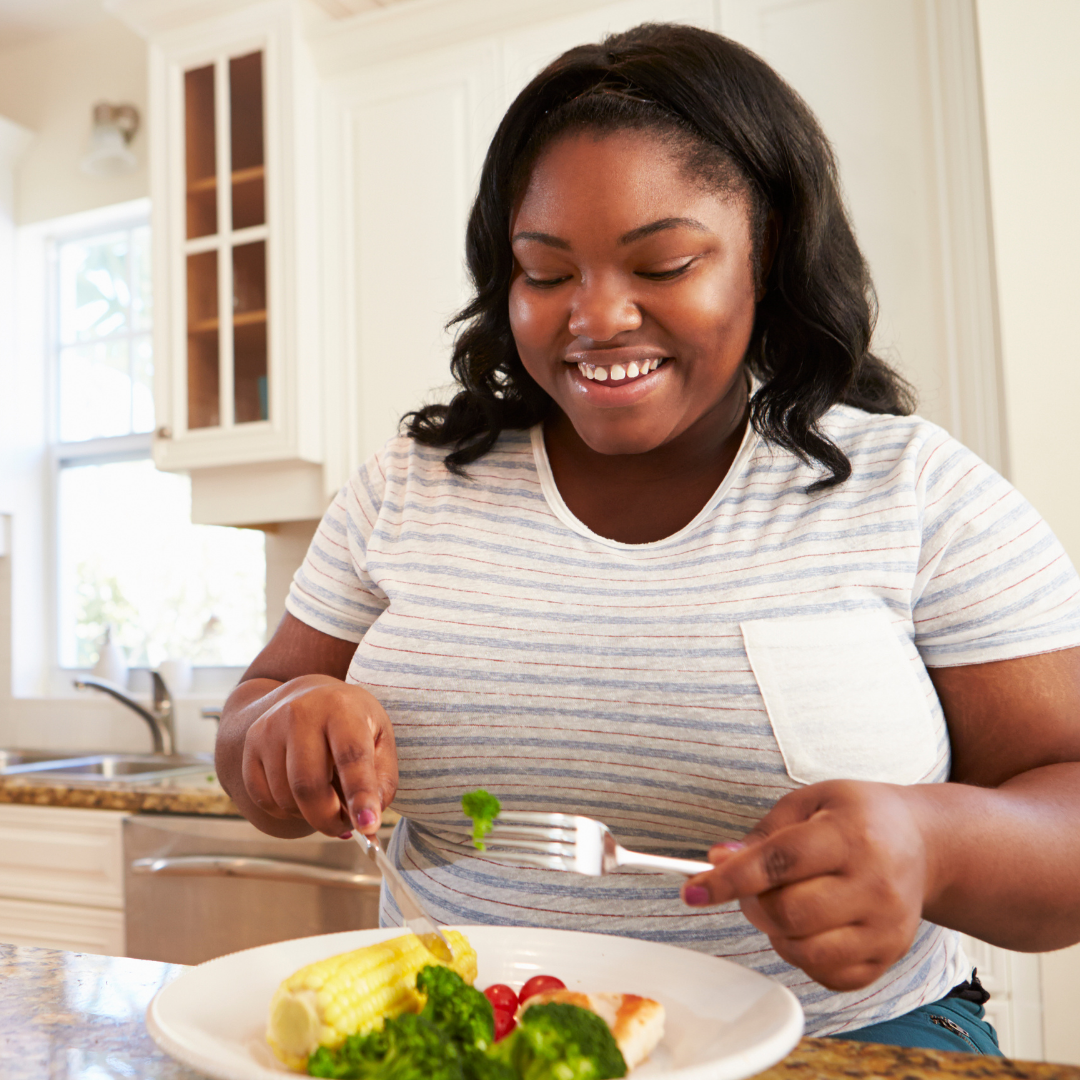
4 Train your taste buds
There is no magic pill to stop cravings, but over time, you can at least bend them to your will. Your taste buds and gut microbiome can adapt to what you feed them. Over time (give it six weeks or so), your body will start to crave the healthier food you give it. We know that this is a major trust exercise, but we promise it works. For example, there is probably a vegan product or vegetable you didn’t like before you went vegan. Not a fan the first time you tried vegan cheese, but now you always keep it stocked? Freaked out by Brussels sprouts, but now you crave them every winter season? See? Trust the process.
“Give yourself a chance to grow accustomed to food as an adult,” Stuart recommends. “I always suggest using a favorite flavor profile with new food. Add a known flavor to a new food. Love Mexican? Make a spicy tofu scramble!”
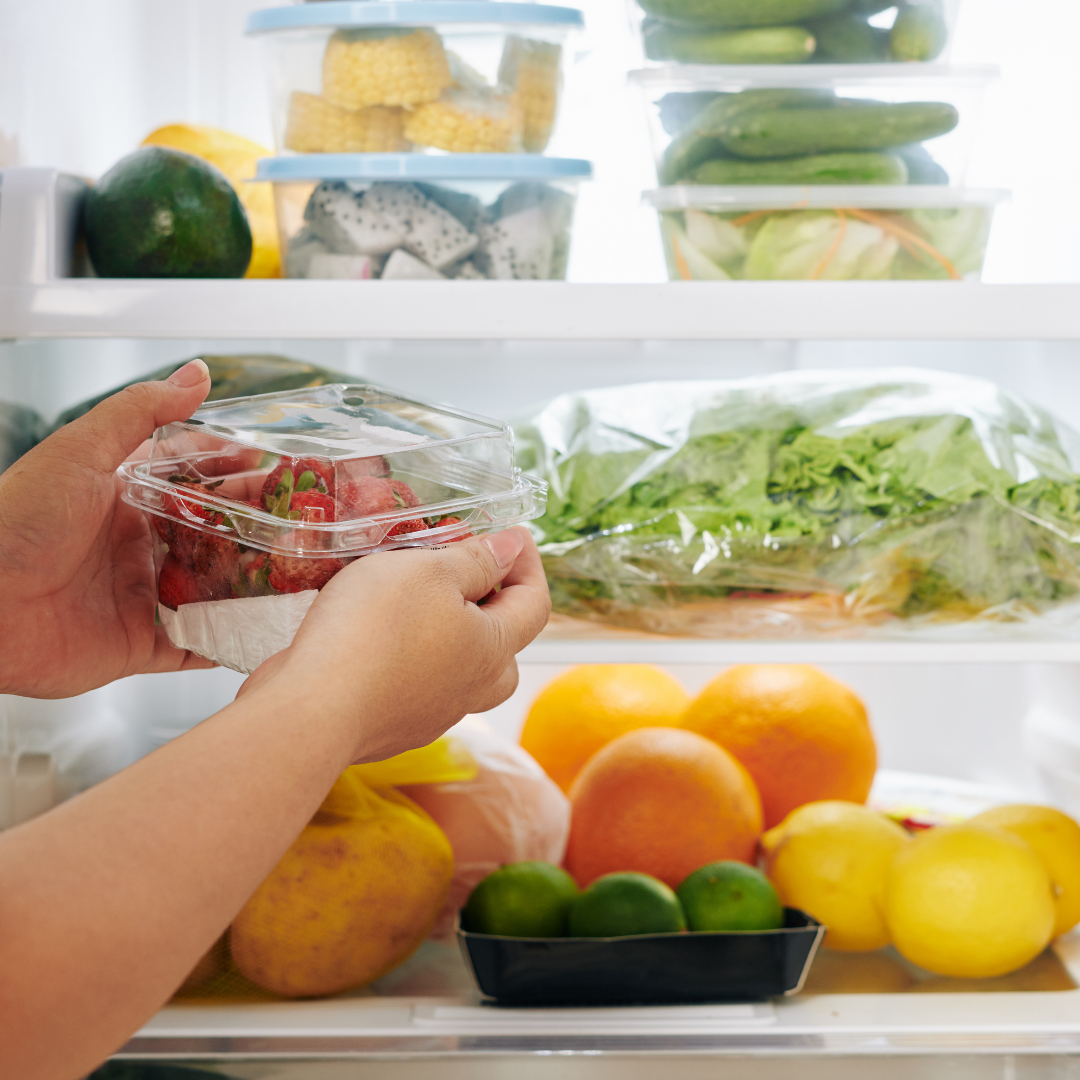
5 Stock your fridge with healthy foods
Don’t leave your meals to spur-of-the-moment decisions. You don’t have to write out a plan or spend hours on a Sunday meal-prepping, but you should keep healthy food on hand so you don’t end up getting vegan pizza delivered. Convenient foods to keep on hand include frozen veggies, quick-cooking grains, pre-chopped vegetables and lettuce, canned beans, oil-free hummus, sauces, and fruit galore (if you’ve never tried cotton candy grapes, you need to). With a well-stocked kitchen, there’s no excuse to not eat incredibly delicious, plant-based meals.

6 Clean up your Instagram feed
Just as you would unfollow a person who was giving off negative vibes, it helps to unfollow any accounts that trigger cravings or undermine your self-esteem. If you know that you act on impulse whenever your local vegan bakery posts a two-for-one deal, it might be time to take a break from that account (you can always re-follow them later). Also, get rid of any accounts that make you feel guilty or like you’re not good enough. Images of ripped vegan bodybuilders or lean plant-based yogis can be aspirational and motivating to some, but if they make you feel down on yourself or trigger thoughts of hopelessness, these accounts aren’t helping. During the first few weeks of your weight-loss journey, you may even want to delete the app from your phone. Focus on yourself because you’re worth it, and you’re going to be successful.
For more on vegan health and wellness, read:
JUMP TO ... Latest News | Recipes | Guides | Health | Subscribe

